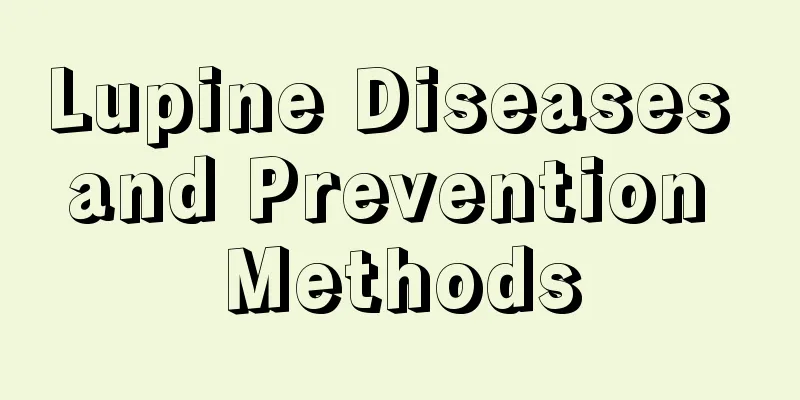Lupine Diseases and Prevention Methods

Powdery mildew on lupinesymptomIn the early stage of the disease, many small white spots will appear on the plant. When the temperature and humidity are high, the spots will gradually expand and even spread to the leaves of the entire plant. When the disease is serious, a lot of white hyphae will appear on the leaves, which will gradually turn into black or brown colonies. The leaves of the affected plants are noticeably thickened and the flowers are deformed. Prevention and treatment methodsDuring maintenance, timely pruning should be carried out to cut off dense and yellow branches to enhance light transmittance; fertilization should be carried out reasonably to promote plant growth and enhance disease resistance; the indoor temperature should not be too low in winter. When the disease occurs, remove the diseased leaves in time and check frequently to see if it has spread to other plants. In the early stage of the disease, spray the medicine in time and use it according to the instructions. Lupine rustsymptomWhen the disease occurs, there will be a lot of rusty brown powdery substances on the underside of the leaves, which will gradually spread upwards, and brown spores arranged in lines will appear on the leaves. The leaves will then gradually wilt and turn yellow. If not treated in time, the entire plant will gradually wilt or even die. Prevention and treatment methodsTake preventive measures and spray fungicides once a month, especially on the back of the leaves. When the disease occurs, remove the affected leaves and spray fungicides in time, once every 5 to 7 days, for 3 to 5 times in a row. Lupine basal rotsymptomThe pathogen Hu Zhengyao invades the rhizomes of seedlings, causing them to turn black and rot. When the environment is too humid, white mold will appear on the stems. After the plant is infected, the roots and stems will rot and become soft within a few days. After a few days, the leaves will wilt, the entire plant will fall over, and the plant will die. Prevention and treatment methodsOnce the plant becomes sick, there is no way to treat it, so preventive medication is required. Disinfect the seeds and soil before planting, pay attention to ventilation and light transmission during daily maintenance, and irrigate the roots with disinfectant every month. When the disease occurs, remove the plants in time and irrigate the roots with fungicides to avoid infecting other plants. |
<<: Common diseases and pests of Podocarpus and their control methods
>>: Diseases and Pests of Yellow Bulbs and Their Control Methods
Recommend
How to propagate zinnia
sowing Pre-sowing treatment Before sowing, the so...
Several common flowers and Feng Shui
ivy Youthful Uses for bringing luck: peace and pr...
How to water bird's tongue orchid
1. Time: Because the most suitable temperature fo...
Our whole summer is occupied by these flowers
Hydrangea YANGHUADAQUAN You should all be familia...
Can I grow basil at home?
Can I grow basil at home? You can grow perilla at...
The growing environment and local conditions of the peach tree
Growth environment and conditions of small peach ...
Is the money tree poisonous?
1. Is it poisonous? The money tree is non-toxic, ...
How long is the growth cycle of a dandelion?
Introduction to Dandelion Growth Dandelions can g...
When is the best time to sow osmanthus seeds?
Osmanthus seeds sowing time Osmanthus seeds can b...
Add some vinegar to eggshells to keep your flowers green all year round
Collecting Eggshells Don’t throw away egg shells ...
The flower language of Lycoris radiata, pictures of Lycoris radiata
1. Graceful and Pure Lycoris radiata belongs to t...
How to grow and water succulents in summer
Succulents are loved for their delicate appearanc...
Can dry leaves be used as fertilizer?
Dried leaves as fertilizer Dry leaves can be used...
The efficacy and function of autumn peony
The ornamental effect of autumn peony I think the...
Strawberry planting time and method, how to grow strawberries
1. Planting time There is no specific time for pl...









